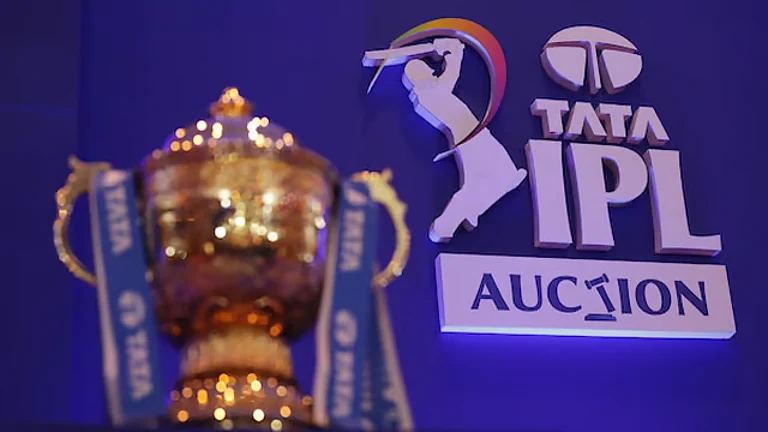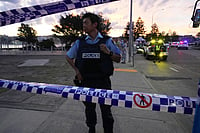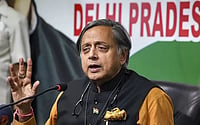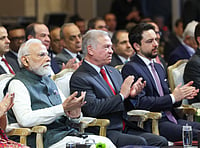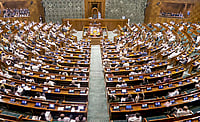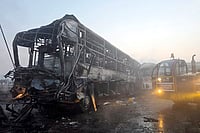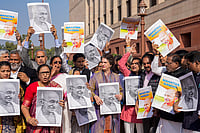But Lal Darja , bankrolled by Bollywood music director Bappi Lahiri, promises to be a departure from Dasgupta's nine earlier features in several respects. For one, the film, being made on a projected budget of about Rs 25 lakh, contains a strong comic element, which is unprecedented in the director's previous work. Two, it scythes right across social divides and straddles a much wider spatial range than Dasgupta has ever done before. It juxtaposes the rural and the urban to convey the contrast, in a very physical way, between'rustic' vitality and bourgeois sterility. And last but not least, it is the director's first film that is based on a self-written tale. "In any case, I am in the habit of changing the text to such an extent that what finally emerges on the screen is far removed from the original. So I've now opted to work on my own story for it gives me much greater leeway," explains Dasgupta, whose films—from Dooratwa (1978) to Charachar (1993)—have used the work of some of Bengal's greatest litterateurs as their starting points.
Lal Darja , scripted by Dasgupta himself,features veteran actor Shubhe-ndu Chatterjee in the pivotal role of Nabin Dutta, a successful Calcutta dental surgeon married to an independent-minded schoolteacher (played by Bangladeshi actress Cha-mpa), who is looking for a more meaningful life than the workaholic doctor can give her. In sharp contrast, Nabin's chauffeur Dinu (Asad, again from Bangladesh) is happily married to two women, has a daughter from one of them and by the time the film ends, is irresistibly drawn towards a third woman.
What does the happy-go-lucky driver have that the professionally accomplished dentist doesn't? Why is he left alone to peer endlessly into the mouths of his patients or to crouch for hours before thetelevision on soulless evenings? As the doctor's mind drifts back to his childhood, Nabin as a child, the epitome of purity, faith and innocence, appears. In a return to his childhood lies his salvation from emotional anguish, loneliness and the absurdity of his life as an adult. "
Lal Darja ," says Dasgupta, "is a celebration of regeneration and the discovery of innocence. Prosperity can never necessarily lead to happiness." The vision here, as in Dasgupta's entire oeuvre, is intensely personal. The sense of wonder and creative imagination, the very basis of the life-affirming forces of youth, are central to his worldview, as they are to his film's.
For a filmmaker whom the Australian critic John W. Hood describes as one who "is more interested in the poetic potential of cinema than in the presentation of narrative", the role of the cinematographer is crucial. Lal Darja marks the return of Kerala-based cameraman Venu to the director's unit after a one-film hiatus. Charachar was shot by Satyajit Ray regular Soumendu Roy because Venu, who earlier lit Bagh Bahadur (1990) and Tahader Katha (1992) for Dasgupta, was preoccupied. "His return," says the director, "is a boon."
Dasgupta is confident that Lal Darja will be ready for public viewing soon. "I have canned 80 per cent of the film," he says. "All that is left is a brief schedule in Cherrapunji coming up in February." Will the Red Doors, when thrown ajar, reveal another high in Dasgupta's filmmaking career? Strictly on form, it should.








